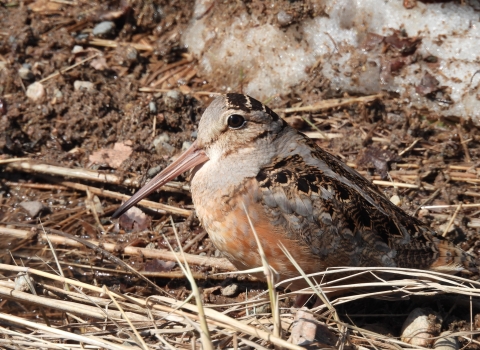The Lower Great Lakes Fish and Wildlife Conservation Office (FWCO)’s Ohio River substation is located at the Ohio River Islands National Wildlife Refuge in Williamstown, West Virginia. It is part of a network of offices within the Service’s Northeast Fish and Aquatic Conservation Program working to protect and restore native fish species and their habitats for not only anglers, but everyone that enjoys recreating on our waterways and depends on healthy rivers for drinking water. Our substation is relatively new, being established in 2022, and is responsible for monitoring invasive carp (silver, bighead, grass and black) in the mid-to-upper reaches of the Ohio River. We work closely with the West Virginia Division of Natural Resources, West Virginia University, Kentucky Department of Fish and Wildlife, and the Pennsylvania Fish and Boat Commission in our mission. We are also members of the Ohio River Basin Partnership, a collection of federal and state agencies, non-profit and for-profit private organizations, and universities that share a common goal of preventing invasive carp movement so that they won’t become established in Ohio River tributaries and remain out of the Great Lakes. Established carp populations, especially silver and bighead, could result in native fish population crashes that negatively impact our popular recreational fisheries. Additionally, silver carp are known for having a startle reflex that causes individuals to spontaneously leap from the water when detecting noise produced by boat motors. These fish can be large (upwards of 30 pounds!!) so it would be like a 30-pound “fish missile” randomly jumping out while you’re enjoying time at the lake!
Being on the presence and uninvaded front does create a challenge for us because these pools are considered low-density pools, meaning they typically have fewer adult fish that can be studied and then removed. When dealing with invasive species invasive species
An invasive species is any plant or animal that has spread or been introduced into a new area where they are, or could, cause harm to the environment, economy, or human, animal, or plant health. Their unwelcome presence can destroy ecosystems and cost millions of dollars.
Learn more about invasive species that can successfully reproduce and that have no natural predators, it is vital to study individuals that could lead to the expansion of their current range. Increasing our knowledge of these invasive species will help managers understand how severe the negative impacts are to the vitally important native fishes of the Ohio River.
Our Ohio River study area focuses on four pools where we know carp have already invaded, the “presence front” and where we think they are likely to invade next, the “uninvaded front.” Those mainstem pools are: R.C. Byrd, Racine, Belleville and Willow Island. Staff also monitor some of the larger tributaries within these pools including the Kanawha River (WV) and the Muskingum River (OH).
Our staff use several different sampling techniques to intercept adult invasive carp, but electrofishing is the main method of choice. For adult silver and bighead carp that are notoriously difficult to capture with this gear, our staff will use a combination of electrofishing and the deployment of gill nets to increase the rate of capture. Additionally, longer sets of roughly two hours are used to raise capture rates, especially in areas where silver and bighead carp are known to move around.
Another aspect of our invasive carp research is being part of an Ohio River Telemetry Array Program that detect movements of tagged fish in the Ohio River. Several hundred carp, catfish, and paddlefish have been tagged with a radio transponder that sends out a signal at a special frequency. These signals will be detected by receivers which have been deployed across nearly all of the Ohio River. This telemetry system is allowing fishery resource managers with the U.S. Fish and Wildlife Service and from the states of West Virginia, Ohio, Kentucky, Indiana, and Illinois to track fish as they move up and down the river system. Other federal agencies and some universities also aid in the monitoring and maintaining of the many receivers deployed across the Ohio River.
The Lower Great Lakes FWCO Ohio River Substation monitors and maintains data from 20 sites within the study area in the R.C. Byrd, Racine, Belleville and Willow Island pools, as well as in in the Kanawha River (WV) and the Muskingum River (OH) which are large tributaries to the Ohio River. This information sheds light on fish movement into and out of the various pools and tributaries. This level of information allows managers to potentially locate “hot spots” of invasive carp movement or large pockets of fish that could allow for more successful removal efforts helping to improve the Ohio River fishery.






